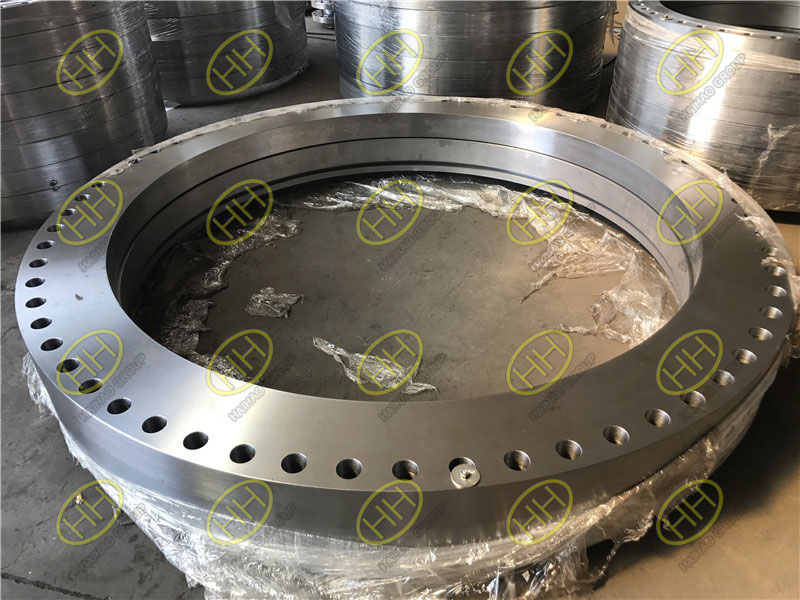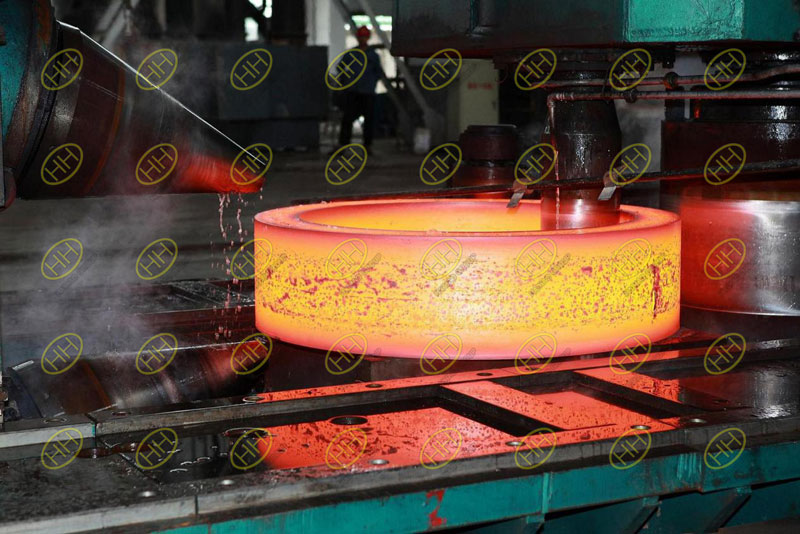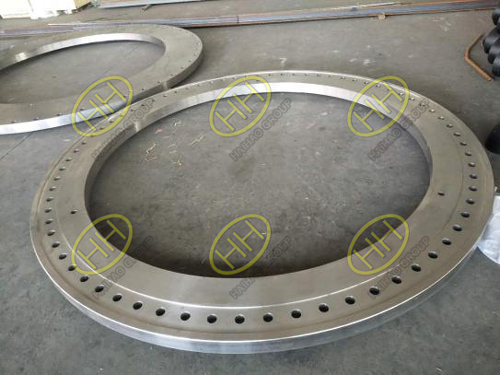What can you do when large forgings crack?
You can do this when large forgings crack.
To prevent surface and internal cracks in large forgings, the following countermeasures must be taken:
1.The raw material selected should be thoroughly cleaned of all defects on the surface of the blank. For example, wagons are often required for extruding blanks. When forging a small bar that is not convenient for the car on the hammer, start with a light tap to break the coarse crystal ring, and then gradually increase the blow;
2.The ingot billet should be subjected to sufficient high temperature homogenization treatment to eliminate residual internal stress and intra-grain segregation to improve metal plasticity. When forging heating, ensure that it is heated at the specified heating temperature and fully maintained;
3.According to different alloys, choose a good forging temperature range. For example, the good forging temperature range of the LC4 alloy ingot is: at 440X: left and right for heat preservation, and then slowly cooled to 410-390T: left and right forging, good plasticity;
4.The aluminum alloy is poor in fluidity. It adopts a forging process with intense deformation (such as roll scaring), and the degree of deformation must be appropriate, and the lower the deformation speed, the better;
5.During the forging operation of forgings, attention should be paid to prevent bending and creasing, and timely correction or elimination of the defects of the puppets produced. When rounding, do not dry out 20%, and do not roll too many times.
6.The tools used for forging and die forging should be fully heated, and the heating temperature is close to the forging temperature, generally 200-420, in order to improve the fluidity.
When cracks appear, we also have a headache and it is troublesome to solve, so in order to prevent cracks, we need to take precautions, and we should take the following countermeasures:
1.The raw materials shall be inspected according to the standards, and the content of harmful elements shall be strictly controlled. When some harmful elements (such as boron) are too much, the forging heating temperature can be appropriately reduced;
2.It needs to be cleaned by picking skin or grinding wheel before heating and forging;
3.The furnace temperature and heating speed should be controlled during heating;
4.When heating in a flame furnace, avoid excessive sulfur content in the fuel. At the same time, it should not be heated in a strong oxidizing medium to prevent oxygen from diffusing into the forging and reducing the plasticity of the forging;
5.Pay attention to control the heating and deformation temperature;
6.When drawing for a long time, you should start tapping. After the tissue is properly broken and the plasticity is improved, increase the amount of deformation. The total deformation per fire during the drawing should be controlled in the range of 30% -70%. It should not be combined in one place. The spiral forging method should be used, and it should be fed from the big head to the tail. For forgings and intermediate billets with very low plasticity, deformation techniques such as plastic pads and jacket upsetting can be used.
7.The mold should be preheated (preheating temperature-generally 150-350t), and forging and die forging should be well lubricated.
We have explained in detail how to solve cracks and how to prevent cracks. If you have any questions, you can email to us:sales@haihaogroup.com




